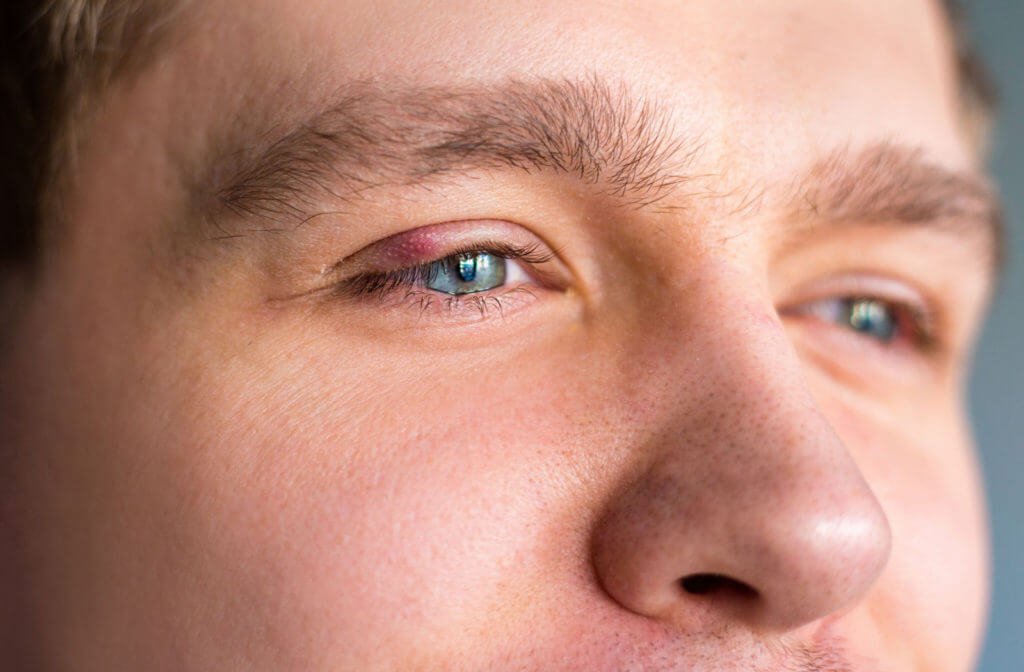Chalazion vs. Stye: What’s the Difference?
A chalazion and a stye are both common eyelid conditions, but they have different causes, symptoms, and treatments.
What is a Chalazion?
A chalazion (also known as an internal hordeolum) is a small bump on the eyelid that occurs when one of the oil glands (meibomian gland) in the eyelid becomes blocked. The blockage causes the gland to become inflamed and swollen, and a small bump may form on the eyelid. Chalazia typically develop slowly over time and may not cause any symptoms initially. However, as they grow larger, they can cause redness, swelling, and tenderness on the eyelid. They may also cause blurred vision if they press on the eye. Chalazia are usually painless and do not cause a discharge or crusting around the eyelid. Chalazia can occur in patients with blepharitis of the eyelid margin and form from chronically infected styes that scarred.
Chalazia can take several weeks or even months to fully heal. However, there are several signs that can indicate that a chalazion is healing:
Reduction in size: One of the most noticeable signs that a chalazion is healing is a reduction in size. As the inflammation and swelling of the chalazion decrease, the bump on the eyelid should become smaller and less noticeable.
Decreased redness and tenderness: Chalazia can cause redness, swelling, and tenderness on the eyelid. As the chalazion heals, these symptoms should start to subside. The eyelid may still be slightly red, but it should be less tender to the touch.
Resolution of discharge or crusting: If the chalazion was causing a discharge or crusting around the eyelid, this should start to clear up as the chalazion heals. The eyelid should appear cleaner and less irritated.
Improved vision: If the chalazion was large enough to affect your vision, you should notice an improvement in your vision as the chalazion heals. Your eyelid may still feel slightly swollen or heavy, but you should be able to see more clearly.
It is important to note that chalazia can sometimes recur or persist despite treatment, so it is important to monitor your symptoms carefully and follow up with your healthcare provider if you have any concerns.
What is a Stye?
A stye (also known as an external hordeolum), on the other hand, is a small red bump that forms at the base of an eyelash follicle at the eyelid margin. Styes can be painful, red, and swollen, and may cause a discharge or crusting around the eyelid.
The treatment for chalazia and styes is also different. For chalazia, warm compresses applied to the affected eyelid several times a day can help reduce inflammation and encourage drainage of the blocked oil gland. In some cases, your healthcare provider may also prescribe antibiotics to prevent infection. If the chalazion does not improve after several weeks or if it is large enough to affect vision, your healthcare provider may recommend surgical removal or injection of anti-inflammatory medicine directly into the lesion with an ophthalmologist.
For styes, warm compresses can also be helpful in reducing inflammation and promoting drainage of the infection. If the stye does not improve after several days or if it becomes large or painful, your healthcare provider may need to drain the stye with a small incision as well.
Treating Chalazions & Styes
In general, chalazia and styes are both common eyelid conditions that can be treated effectively with home remedies and medical treatment. However, it is important to seek medical attention if you experience persistent or severe symptoms, as these can be signs of a more serious eye infection or condition.
Schedule an eye exam today with Colorado Eye Surgeons.

